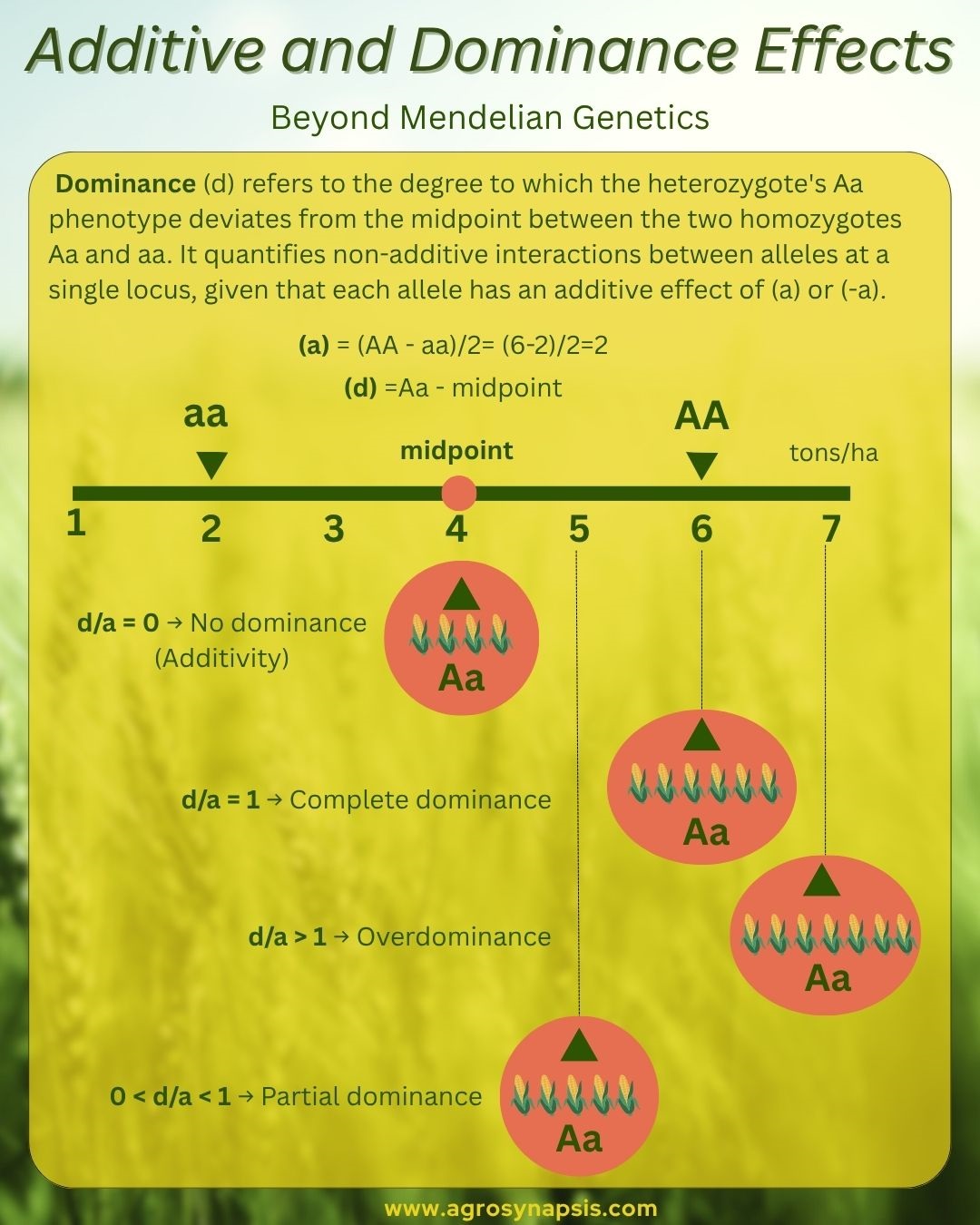When we first learned genetics in school, we were introduced to terms like “dominant” and “recessive” to explain simple traits such as flower color or seed shape. These work well for Mendelian traits, but fall short when it comes to quantitative traits like grain yield, plant height, or stress tolerance.
In quantitative genetics, we use a more flexible and precise way to describe how alleles affect traits:
→ Additive and dominance effects.
👉 Dominance, in this context, refers to the degree to which the heterozygote’s phenotype deviates from the midpoint between the two homozygotes. It quantifies non-additive interactions between alleles at a single locus.
Let’s break this down with an example:
📊 A QTL affects grain yield in maize:
AA plants yield 6 tons/ha
Aa yield 5 tons/ha
aa yield 2 tons/ha
🧮 From this, we calculate:
Additive effect (a) = (6 – 2)/2 = 2
Dominance deviation (d) = 5 – 4 = +1
(where 4 is the midpoint between AA and aa)
👉 To compare dominance across different traits and QTLs, we standardize these values by calculating the scaled dominance deviation (d/a), which expresses how much the heterozygote deviates from additivity relative to the additive effect size.
In this case:
d/a = 1 / 2 = 0.5, indicating partial dominance.
🔍 Types of dominance based on the scaled dominance deviation (d/a):
✅d/a = 0 → No dominance (Additivity):
The heterozygote (Aa) lies exactly between the homozygotes.
➤ Example: If AA = 6, aa = 2 → Aa = 4
✅d/a = 1 → Complete dominance:
The heterozygote (Aa) has the same phenotype as AA.
➤ Example: Aa = 6
✅0 < d/a < 1 → Partial dominance:
The heterozygote lies closer to one homozygote, but not equal.
➤ Example: Aa = 5
✅d/a > 1 → Overdominance:
The heterozygote outperforms both homozygotes.
➤ Example: Aa = 8
➤ This is often observed as hybrid vigor (heterosis).
🎯 These concepts are essential in understanding trait inheritance. They help breeders not only choose which alleles to select but also understand how these alleles interact in hybrids or segregating populations.
At AgroSynapsis, we are fascinated by training—especially by transforming complex genetic concepts into attractive narratives through engaging infographics and by breaking down the most relevant information into actionable insights for every breeder.
🎯 If you find our content helpful and want to strengthen your skills, we invite you to fill out our short training interest form. By doing so, you’ll help us tailor upcoming workshops to your real needs—and you’ll be the first to receive early access and special discounts for future sessions.
👉 https://lnkd.in/g3tApqPzs
Additive and Dominance Effects – Beyond “Dominant” and “Recessive”

by

